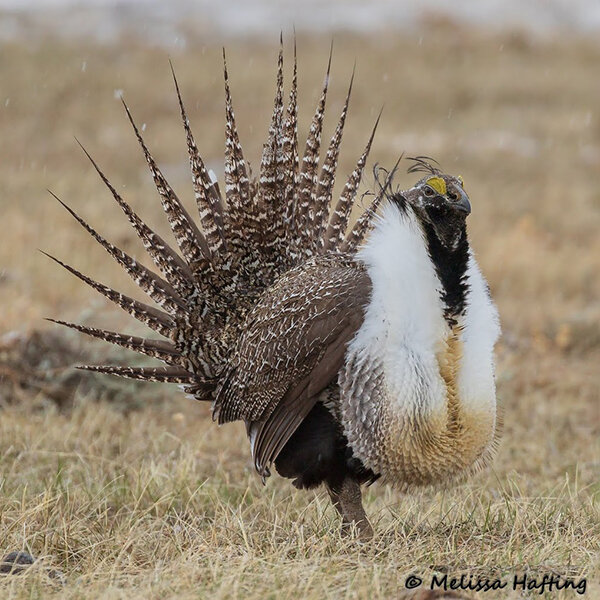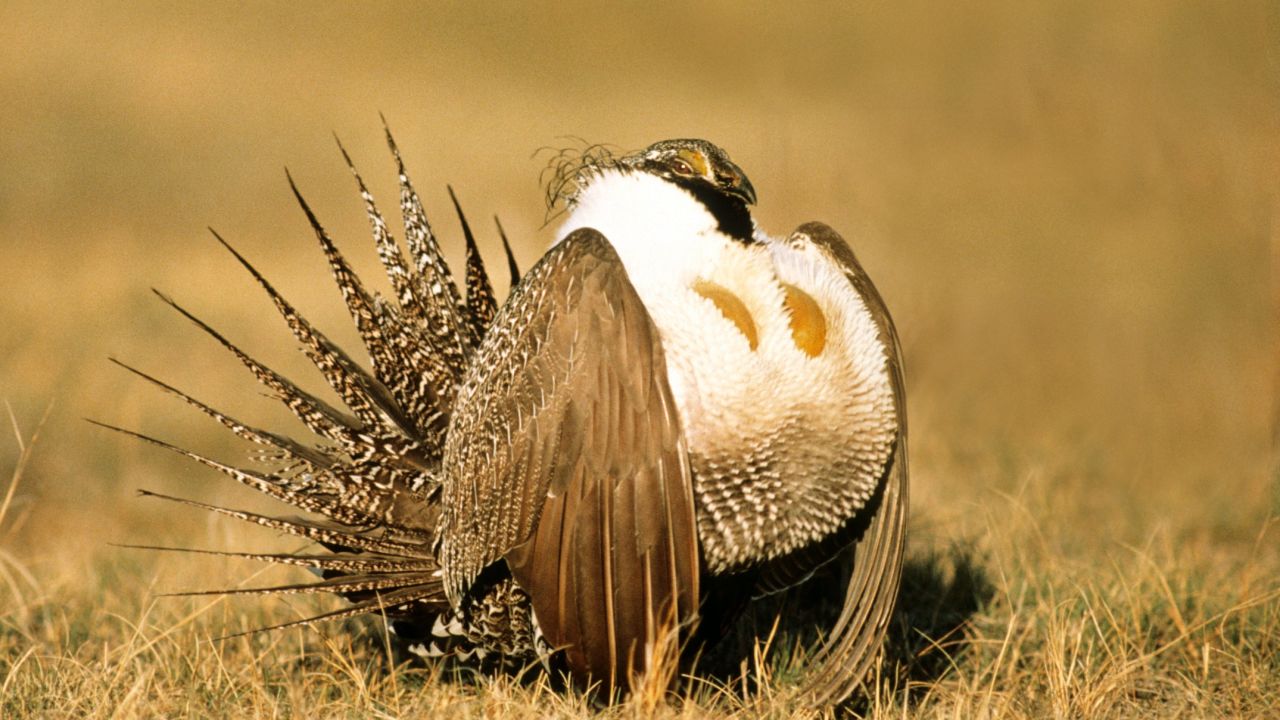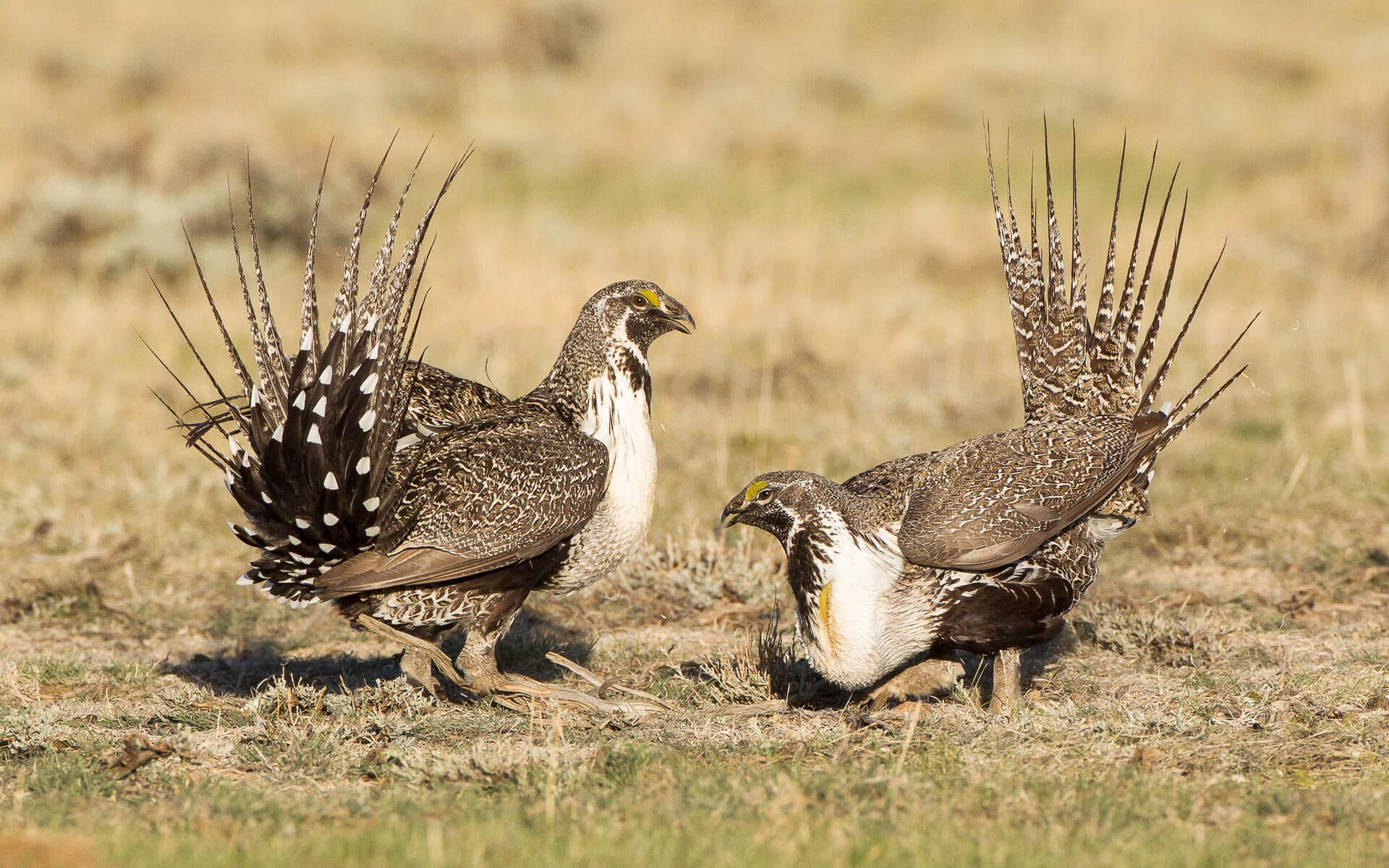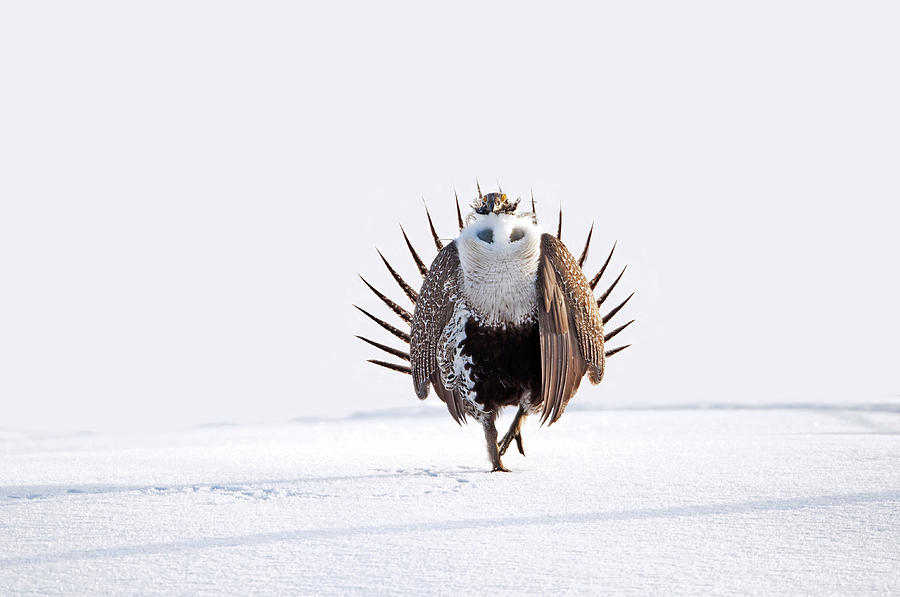The Greater Sage-Grouse (Centrocercus urophasianus) is a charismatic bird species that is predominantly found in the sagebrush ecosystems of North America. This unique bird, with its elaborate mating displays and stunning plumage, has become an icon of the western landscape. In this article, we will delve into the characteristics, habitat, conservation status, and the ongoing efforts to protect the Greater Sage-Grouse.


The Greater Sage-Grouse is a large bird, measuring between 25 to 30 inches (64 to 76 cm) in length and weighing an average of 2 to 7 pounds (0.9 to 3.2 kg). The species is notable for the intricate, elongated feathers on its breast and neck, which can expand or contract depending on the bird’s posture and mood. Males display these remarkable plumes during mating rituals to attract females.
This bird is primarily associated with sagebrush-steppe ecosystems, characterized by vast expanses of sagebrush, native grasses, and scattered shrubs. These habitats provide critical resources for the Greater Sage-Grouse, including food, cover, and nesting sites. They are adapted to live in arid and semi-arid regions across eleven western states in the United States and two provinces in Canada.

The conservation status of the Greater Sage-Grouse has become a topic of concern due to habitat loss and fragmentation, as well as the impacts of human activities such as urban development, mining, renewable energy, and livestock grazing. These factors have contributed to the decline of sagebrush habitats, posing a significant threat to the species.
In 2010, the U.S. Fish and Wildlife Service determined that the Greater Sage-Grouse warranted protection under the Endangered Species Act but did not list it as an endangered species, primarily due to voluntary conservation efforts by various stakeholders. This decision prompted collaborative conservation plans to be developed and implemented across its range to conserve the bird and its habitat.

Conserving the Greater Sage-Grouse requires a multi-faceted approach involving federal, state, and local agencies, private landowners, and conservation organizations. Key conservation strategies include habitat restoration, land management practices that maintain or enhance sagebrush habitats, predator management, and minimizing disturbance during critical life stages.
Numerous initiatives have been launched to protect and restore sagebrush ecosystems. These efforts focus on reducing the impacts of wildfire, invasive plant species, and infrastructure development. Additionally, partnerships have been forged among landowners, government agencies, and non-profit organizations to implement conservation measures and facilitate landscape-scale conservation planning.

The Greater Sage-Grouse represents the spirit of the North American sagebrush ecosystem and serves as an indicator species for the health of this unique landscape. Efforts to conserve this iconic bird and its habitat are crucial not only for its own survival but also for the preservation of the sagebrush ecosystem and the myriad of other plant and animal species that depend on it. By fostering collaboration and implementing effective conservation measures, we can strive to secure a sustainable future for the Greater Sage-Grouse and the remarkable sagebrush habitats it calls home.

